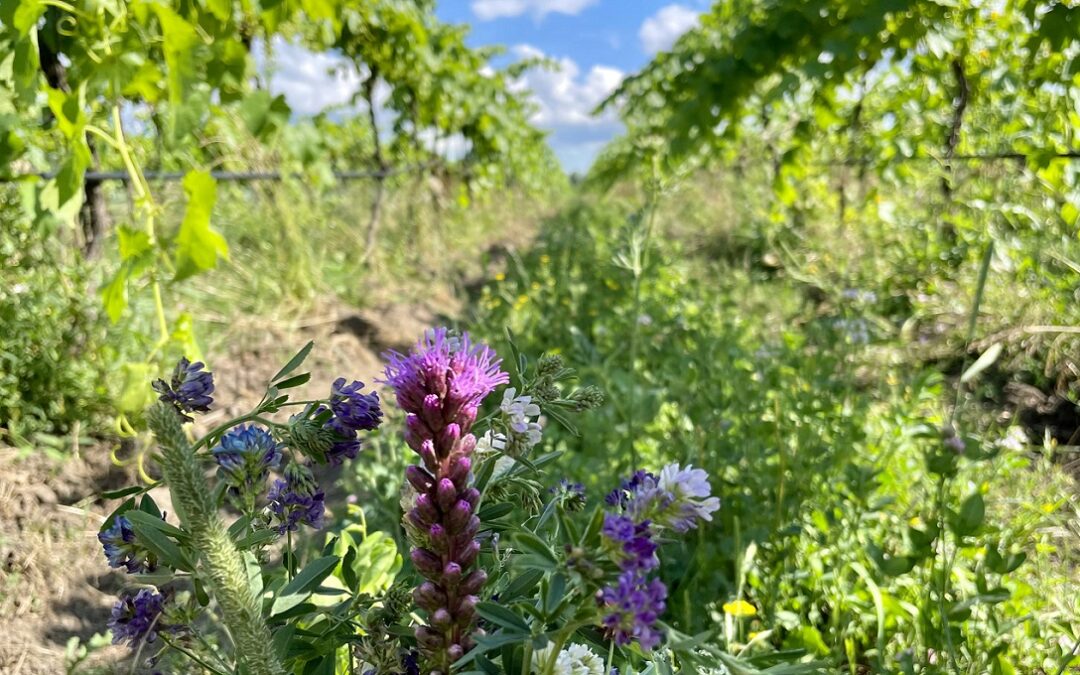Cover crops are plants, typically including a variety of grasses, legumes, and flowers, that are sowed within and around the primary crops. At Southbrook, we favor indigenous flowers and legumes for reasons that benefit both our grapevines and the environment.
Nitrogen Fixers in Nature’s Service
Legumes are renowned for their ability to ‘fix’ nitrogen. This means that they convert nitrogen from the air into forms that can be absorbed by plant roots—a natural fertilizer. By planting legumes amongst our vine rows, we provide our grapes with crucial nutrients without resorting to synthetic alternatives.
Guardians of the Ground
Cover crops like ours serve as the guardians of the soil. They shield the earth from the harsh impacts of rain, preventing the precious topsoil from washing away. Their roots create complex networks that hold the soil together, fighting erosion and promoting the retention of water during dry spells.
The Carbon Keepers
Plants possess the remarkable ability to pull carbon dioxide from the air and sequester it in the ground through a process known as carbon sequestration. The cover crops at Southbrook play a pivotal role in this process, helping to retain more carbon in the soil. This not only enriches the earth but also mitigates the impact of greenhouse gases on our climate.
The Visible and Invisible Benefits
Beyond these substantial environmental benefits, cover crops have a more noticeable impact—the beauty they add to the vineyard. The blossoms of indigenous flowers attract pollinators and beneficial insects, enhancing biodiversity and creating a balanced ecosystem.
Meanwhile, legumes bloom with their own quiet elegance, painting the rows green with hints of their colorful flowers, a testament to the unseen magic they work beneath the surface.
At Southbrook, we believe in nurturing not just a vineyard but a legacy. By integrating cover crops into our viticulture practices, we commit to sustainable methods that support the earth that gives us the fruits for our wines.
We invite wine enthusiasts, fellow grape growers, and sustainable farmers to observe this practice in action. Witness the transformation that a vibrant, carefully chosen cover crop can bring to the health of a vineyard—and savor the depth it adds to each bottle produced.
Raise a glass to the ground beneath—the foundation of every great wine begins here

